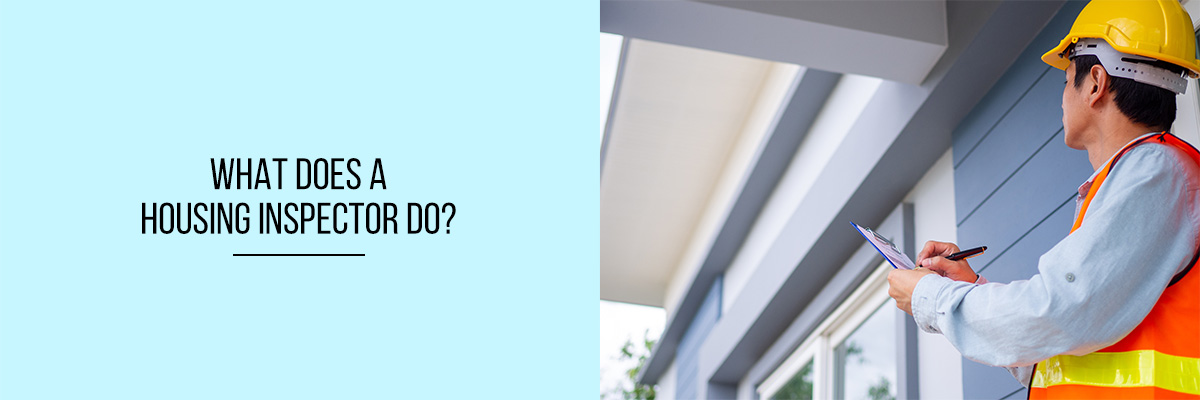Every home should be designed to prioritize the safety and well-being of its residents, and this becomes especially critical in multifamily housing. For families, particularly those in low-income groups, having a secure and comfortable living environment is not just desirable but essential.
Government-supported affordable housing programs, such as those under HUD (U.S. Department of Housing and Urban Development), play a crucial role in providing safe, subsidized homes to families who may not otherwise afford quality housing in desirable neighborhoods. These facilities are subject to stringent rules and regulations to ensure they meet high standards in areas such as parking, exits, HVAC systems, staircases, elevators, and entryways.
Regular inspections are conducted to verify that these facilities remain safe, comfortable, and functional for the families who live there, particularly those with children. By maintaining high standards, government agencies ensure their investments in affordable housing not only provide shelter but also enhance the quality of life for residents.



So, this blog is really helpful for property owners, landlords, and property managers because it provides useful information they might need in the future. Along with blogs, we also offer webinars on affordable housing, fair housing, and construction. These webinars are led by industry experts who know almost everything about fair housing and construction-related laws and regulations, and they have firsthand experience in the field. If you want to manage your property better without facing any issues, be sure to check out our Construction & Housing webinar page, where you will find hundreds of webinars by experts that will definitely help you.
Housing Inspection and Housing Inspectors
The comfort and safety of housing facilities are not mere privileges, they are fundamental human rights. Housing inspections play a critical role in ensuring that these rights are upheld. These inspections ensure that housing meets essential standards, addressing issues that could compromise the well-being, safety, accessibility, or comfort of residents.
Housing inspections are conducted by trained professionals, commonly known as Housing Inspectors or REAC (Real Estate Assessment Center) Inspectors. These professionals perform detailed evaluations to identify both compliance with housing standards and any potential hazards or deficiencies that may affect residents’ quality of life.
What to Expect During a Housing Inspection
A housing inspection is an essential step in ensuring that a property meets safety and habitability standards. Whether you are a landlord preparing for a government-mandated inspection or a homeowner looking to buy or sell a property, understanding the inspection process will help you be well-prepared and confident.
Key Aspects of a Housing Inspection
- Visual Assessment
The inspector will perform a comprehensive visual inspection of both the interior and exterior of the property, looking for signs of damage, wear, and potential safety hazards. - Structural and Safety Review
The inspector will assess the integrity of the building’s structure, including the foundation, roof, walls, and basement. They’ll also check critical safety features, such as smoke detectors, fire extinguishers, and emergency exits. - Systems and Equipment Check
A thorough review of key systems such as plumbing, electrical, and HVAC (heating, ventilation, and air conditioning) will be conducted. This ensures that all systems are functioning correctly and comply with safety standards. - Pest and Environmental Concerns
Inspectors will look for any visible signs of pest infestations, like termites or rodents, and also check for environmental hazards, such as mold, water damage, or poor ventilation. - Detailed Inspection Report
Once the inspection is complete, you will receive a detailed report outlining any issues found, ranging from minor repairs to significant safety concerns. This report serves as a guide for addressing problems before they escalate.
How the Inspection Will Be Conducted
Expect the inspection to take several hours, depending on the size of the property. During this time, the inspector may ask about the property’s maintenance history. Landlords or property owners are often encouraged to accompany the inspector, as it provides a deeper understanding of the condition of the property.
What Do Housing Inspectors Actually Check?
Housing inspectors conduct a thorough evaluation of the property to ensure it meets safety, health, and habitability standards. Key areas they inspect include:
- Structural Integrity: Inspectors check for cracks in walls, unstable foundations, roof damage, or any signs of structural weakness that could compromise the building’s safety.
- Plumbing: They verify that all plumbing systems are functional and leak-free. This includes inspecting pipes, water heaters, sinks, showers, and toilets for proper water pressure and drainage.
- Electrical Systems: Inspectors examine wiring, circuit breakers, outlets, and light fixtures to ensure HUD compliance with safety codes and prevent fire hazards.
- Heating, Ventilation, and Air Conditioning (HVAC): They evaluate the functionality of heating and cooling systems to ensure a comfortable living environment.
- Basement and Attic: Inspectors look for moisture issues, signs of pests, proper insulation, and ventilation. These areas are also checked for structural concerns and safety hazards.
- Kitchen: They ensure kitchen appliances (like stoves, ovens, and refrigerators) are in working order, check countertops and cabinets for damage, and inspect sinks for leaks or drainage issues.
- Bathrooms: Bathrooms are inspected for proper ventilation, functional plumbing fixtures, water pressure, and the presence of mold or water damage.
- Exterior of the House: Inspectors examine the roof, siding, windows, doors, gutters, and any outdoor structures (like garages or sheds) for signs of wear and tear, damage, or safety concerns.
- Fire Safety: They confirm the presence and functionality of smoke detectors, fire extinguishers, carbon monoxide detectors, and accessible emergency exits.
- Accessibility Features: For housing facilities required to meet accessibility standards, inspectors ensure the availability of features like wheelchair ramps, grab bars, and widened doorways.
- General Maintenance and Cleanliness: Inspectors assess the overall upkeep of the property, ensuring it is free from hazards such as loose floorboards, broken railings, or debris that could cause injury.
- Pest Control: Evidence of pest infestations (rodents, insects, etc.) is thoroughly checked, as it can pose health risks to residents.
By meticulously examining these aspects, housing inspectors ensure that the property is safe, functional, and compliant with regulations, protecting the residents’ comfort and well-being.
Frequency of Housing Inspections
The frequency and timing of housing inspections vary depending on local regulations and the type of housing facility. For example, public housing and subsidized housing may require regular inspections, often annually or biennially, to comply with government standards. Private properties may also undergo inspections, either periodically or when issues are reported.
Why Are Housing Inspections Important?
Housing inspections are vital for protecting residents from risks that could negatively impact their health, safety, and quality of life. They provide accountability for landlords and property managers, ensuring that housing standards are consistently maintained. Additionally, inspections help identify issues early, preventing costly repairs or dangerous situations in the future.
What Are the Biggest Red Flags in a Home Inspection?
A home inspection can reveal potential issues that might require costly repairs or indicate significant risks. Here are some of the most concerning red flags inspectors may uncover:
- Foundation Problems: Cracks in the foundation, uneven floors, or doors and windows that don’t close properly could indicate structural instability.
- Roof Damage: Missing shingles, leaks, or signs of sagging may suggest the roof needs immediate repair or replacement.
- Water Damage and Mold: Stains, peeling paint, or mold growth in basements, attics, or walls could point to leaks, poor drainage, or humidity issues.
- Plumbing Issues: Low water pressure, slow drainage, or corroded pipes can indicate problems that may escalate into expensive repairs.
- Electrical Hazards: Outdated wiring, overloaded circuit panels, or lack of proper grounding can pose serious fire risks.
- Pest Infestations: Signs of termites, rodents, or other pests can damage a property’s structure and create health hazards.
- HVAC Malfunctions: A poorly functioning heating or cooling system can affect comfort and lead to costly replacements.
- Improper Renovations: DIY renovations or unpermitted work can be a liability if they don’t meet building codes or safety standards.
These issues shouldn’t necessarily disqualify a property but warrant further investigation to assess the extent of the problem and associated costs.
What Actions Are Restricted for Housing Inspectors?
While housing inspectors are thorough, there are certain actions they typically cannot perform:
- Invasive Inspections: Inspectors cannot dismantle walls, floors, or ceilings to inspect hidden areas. Their evaluations are non-invasive.
- Specialized Testing: They don’t conduct specialized tests, such as asbestos, radon, or mold testing, unless specifically requested or qualified.
- Repairs or Estimates: Inspectors don’t make repairs or provide precise cost estimates for fixing issues they identify.
- Guarantees: Housing inspectors do not guarantee the condition of the property beyond what is visible at the time of the inspection.
These limitations help ensure the objectivity of the inspection while highlighting areas that may require further professional evaluation.
Tips for Landlords to Prepare for a Home Inspection
As a landlord, preparing for a home inspection can feel overwhelming. However, with the right approach, you can ensure your property meets all the necessary standards and avoid potential issues flagged by Housing Inspectors or REAC Inspectors. Here are some practical tips to help you get ready:
- Conduct Regular Inspections
Stay proactive by performing routine inspections of your property. Regularly checking for maintenance issues helps you address problems before they escalate. - Respond to Resident Complaints Promptly
Address any complaints or repair requests from residents as soon as they arise. Ignoring these issues can lead to citations during an inspection. - Maintain the Property Regularly
Schedule regular maintenance to keep the property in excellent condition. Pay close attention to critical areas like plumbing, electrical systems, HVAC, and structural integrity. - Stay Informed About Rules and Regulations
Keep yourself updated on housing compliance rules and regulations, as these can change over time. Ensuring your property meets current standards will reduce the risk of violations. - Prepare in Advance
If you know the inspection date, thoroughly inspect the property several weeks prior. Address any potential issues during this time to avoid last-minute surprises. - Ensure Compliance with Housing Standards
Double-check that your property complies with all local, state, and federal housing codes. This includes fire safety measures, accessibility requirements, and general habitability standards. - Talk to Tenants or Residents
Residents may notice issues that can be missed during regular inspections. Having a conversation with them can help identify problems you might not be aware of and fix them before the official inspection. - Ensure Proper Lighting Throughout the Property
Make sure all areas, including common spaces, hallways, entrances, and exits, are well-lit. Proper lighting improves safety and creates a positive impression during the inspection. - Check All Security Features
Ensure all safety systems, like fire alarms, fire extinguishers, and detectors, are in working order. Inspectors will check these to confirm the property’s compliance with safety regulations. - Accompany the Inspector
Be present during the inspection to assist the inspector if needed. This helps ensure the process goes smoothly and shows that you’re proactive, preventing unnecessary delays or issues during the inspection.
By following these steps, you can make the inspection process smoother and ensure your property is safe, comfortable, and up to code for your residents. It also helps you avoid the pitfalls of fair housing laws.
Conclusion
Housing inspections are essential for ensuring that properties meet safety, health, and habitability standards, especially in government-subsidized and multifamily housing. Regular inspections protect residents by identifying potential issues early, allowing landlords and property managers to address them before they become significant problems.
By preparing for inspections, staying informed about regulations, and maintaining your property, you can ensure a safe and comfortable living environment for your residents while avoiding costly repairs and compliance issues. Prioritize these steps to keep your property in top condition and meet the necessary housing standards.


